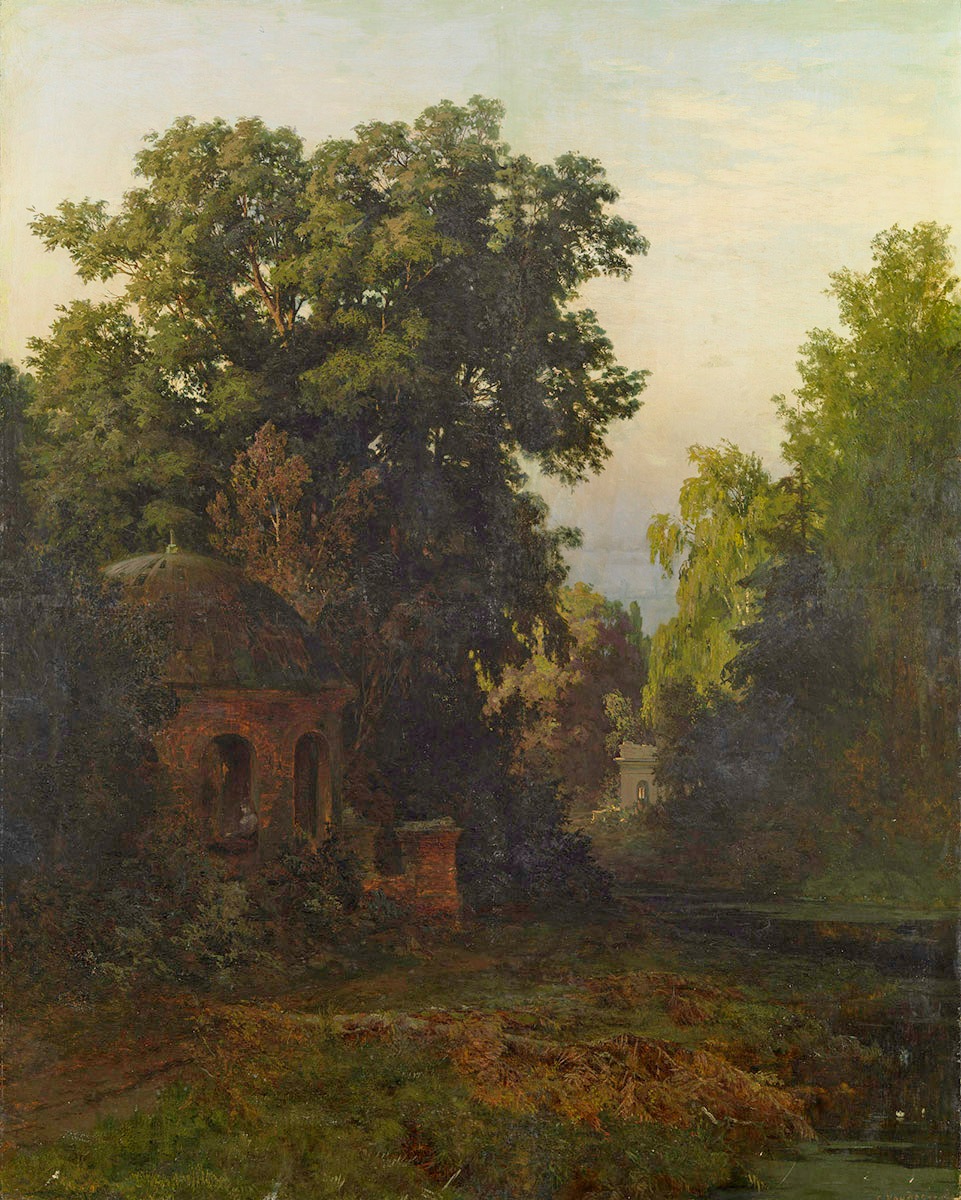MacDougall Auctions 2-3 December 2009
2 December 2009

* 211. KONDRATENKO, GAVRIIL 1854-1924
The Old Park signed, c. 1880
Oil on canvas, 141 by 113 cm.
60,000-90,000 pounds
Authenticity has been confirmed by Vladimir Petrov.
Related literature: For similar works, see F.I. Bulgakov, Nashi Khudozhniki, St Petersburg, 1889.
The Old Park is one of the few extant landscapes by Gavriil Kondratenko that are devoted to the theme of the nature of central Russia. Having spent his life travelling, the artist gave preference to the academic salon – style views of the southern Crimean coast, which also represent the lion’s share of his legacy; alongside these, he showed preference for romanticised views of Georgia or Italy and the bleak castles of the Baltic. Therefore, portrayals of the artist’s native Penza or of the environs of Moscow or St Petersburg – views of the Savvinskiy Monastery and Pavlovsk – are very few. It was, however, for one such work, The Park Grown Wild, that in 1880 the artist was awarded the First prize for landscape painting by the Society for the Encouragement of the Arts. This recognition also prompted Kondratenko to create a series of twenty landscapes connected with locations that were associated with the great Russian poet Lermontov.
By 1884 the series had been completed, and Kondratenko organised a personal exhibition devoted to various sites connected with the memory of his famed fellow countryman. The artist’s landscapes revealed a panorama of a lovely Russian estate of Tarkhana, the poet’s birthplace, views of Moscow and its environs, and those of Pyatigorsk and the North Caucasus. The exhibition was a resounding success, and the proceeds of the sale of tickets and catalogues were used to create a monument to Lermontov and provide financial assistance to men of letters and scholars.
The Old Park is in all likelihood part of this remarkable series. It depicts a small corner of an old park with a pond choked with weeds and an old summerhouse of the estate of Serednikovo that survived the invasion by Napoleon’s army and had once time belonged to Major General Dmitriy Alekseevich Stolypin, the brother of Lermontov’s grandmother Ye.A. Arsenieva.
Serednikovo, a country estate with a park dating back to the late XVIII or early XIX century, was one of the most famous locations in Russia associated with Lermontov. The estate was situated in the Solnechnogorsk district of the Moscow province, to the south of the town of Firsanovka. By the time Lermontov’s relatives gained possession of the estate, a two-storey house with a belvedere and four wings, which had been built by the architect Ivan Starov, already sat on a high hill.
By the time Kondratenko had begun work on the Lermontov series, the lady of the estate was Vera Ivanovna Firsanova – a famous patron of the arts who had carried out significant refurbishment works on the estate, creating the image of an ideal Russian country estate of the “Golden Age”. Vera Ivanovna, who had received a good education, translated Goethe and Byron and loved music, and under her light touch the estate was transformed into a cultural centre for the Moscow area. The “Serednikovo Thursdays” were a magnet not only for the neighbouring gentry: the violin player and composer Julius Konius, Fyodor Shalyapin and Sergei Rakhmaninov were guests here on numerous occasions, and Valentin Serov and Konstantin Yuon sketched and painted their studies and landscapes in the estate’s lovely park.
Notes on symbols:
* Indicates 5% Import Duty Charge applies.
Ω Indicates 20% Import Duty Charge applies.
§ Indicates Artist's Resale Right applies.
† Indicates Standard VAT scheme applies, and the rate of 20% VAT will be charged on both hammer price and premium.